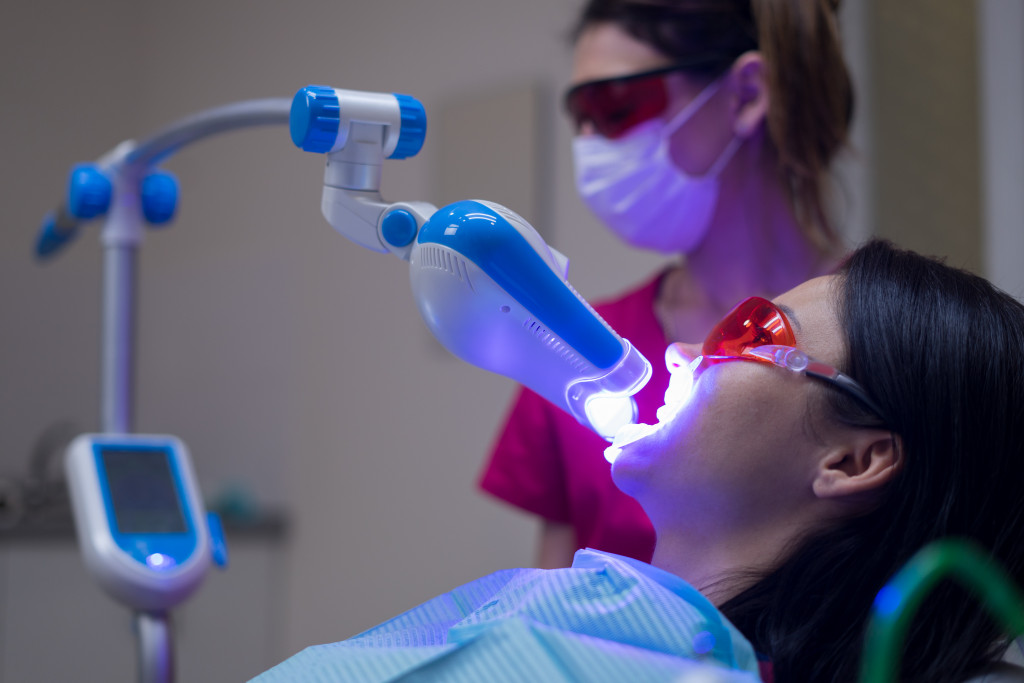These days, it seems like technology is advancing at breakneck speed. Every day, a new gadget or gizmo promises to make our lives easier and more efficient. And while some of these inventions are little more than novelties, others have the potential to change the way we live and work for the better.
Regarding dentistry, technology has improved the quality of care patients receive. Today, dentists have access to a wide array of tools and technologies that weren’t available even a few years ago. Here’s a look at just a few ways that technology is being used in dental offices around the country.
Digital X-Rays
Dentists often use digital x-rays, which emit less radiation than the traditional kind and generate results that appear almost instantly on a computer screen. This allows dentists to look closer at your teeth and identify any problems more quickly and easily.
Digital x-rays play a crucial role in identifying each patient’s right course of action, whether a simple cleaning or more extensive treatment like implants, fillings, or crowns. Plus, if you’re ever concerned about the radiation you’re exposed to, you can always ask your dentist about digital x-rays!
CAD/CAM Systems
Another way that technology is being used in dentistry is with CAD/CAM (computer-aided design/computer-aided manufacture) systems. These systems create custom dental crowns, bridges, and veneers. With CAD/CAM systems, dentists can take an impression of your teeth and then use computer software to design a restoration that will fit perfectly. The restoration is then created using a milling machine, and you can usually get it placed in just one visit!
Moreover, CAD/CAM systems are also used for creating orthodontic aligners, which are becoming an increasingly popular alternative to traditional braces. This is an excellent option for patients who don’t want the hassle of metal brackets and wires or those who are only looking to make minor adjustments.
Intraoral Cameras
Intraoral cameras are small cameras that can be used to get a close-up view of your mouth. These cameras are handy for taking pictures of hard-to-see areas in your mouth. They can also help you visualize what the dentist is talking about when they explain a treatment plan. Many patients find intraoral cameras very helpful because they can see what’s going on in their mouths!
Teeth whitening

Teeth whitening is one of the most popular dental procedures, and it’s no wonder why. Who doesn’t want a bright, white smile? While teeth whitening used to be a tedious and expensive process, today, there are several convenient and affordable options available. The most common method is bleaching, which uses a peroxide-based solution to penetrate the tooth enamel and break up stains. There are also several over-the-counter whitening products available, including gels, strips, and toothpaste. For those looking for a more long-lasting solution, veneers or bonding can be used to create the illusion of whiter teeth. Thanks to innovation in dentistry, achieving a beautiful smile is easier than ever before.
Lasers
These days, it seems like there’s a laser for everything–including dentistry! Lasers are increasingly being used in a variety of dental procedures, from teeth whitening to cavity prevention. But how do lasers work, and what are the benefits of using them in dentistry?
Lasers produce a concentrated beam of light that can be used to remove tissue or stimulate growth. In dentistry, they are often used to remove tooth decay or to prepare teeth for bonding. Lasers can also be used to whiten teeth or to treat gum disease.
One of the main advantages of using lasers in dentistry is that they are very precise. This means that healthy tissue can be left untouched while the laser targets only the area that needs to be treated. Lasers also cause less pain and bleeding than traditional dental tools, and they can speed up healing time.
Teledentistry
Thanks to a new branch of dentistry called teledentistry, patients can now receive dental care from the comfort of their own homes. Using video conferencing software, dentists are able to provide patients with remote consultations, diagnoses, and even treatments. And best of all, this care is often more affordable than traditional in-office dental care. So if you’re looking for a more convenient, affordable, and comfortable way to care for your teeth, be sure to ask your dentist about teledentistry.
The bottom line
Technology has come a long way in recent years, and dentists are now using cutting-edge technology to provide better dental treatments for their patients! From digital x-rays to intraoral cameras, this new technology is making it easier for dentists to identify problems and create custom dental restorations. So next time you visit the dentist, don’t be surprised if they break out some high-tech equipment!

